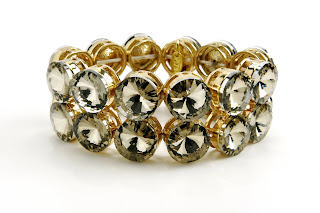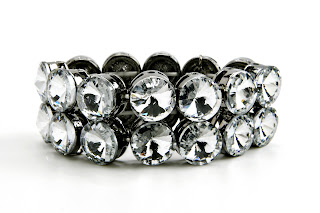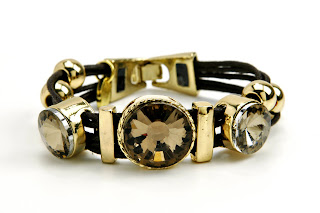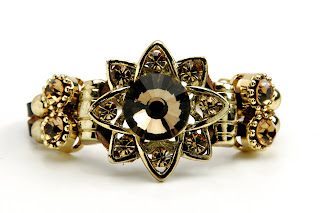Gifts from Israel
- Home
- Bluenoemi Sterlingsilverjewel.com
- Bluenoemi Etsy Shop
- http://www.bluenoemi-jewelry.com
- Engagement Rings - Wedding rings from Israel
- Bluenoemi Spinner Rings
- Sterling Silver Rings
- Earrings
- Bracelets
- Bluenoemi at Amazon
- Necklaces
- Roman Glass Jewelry
- Wearable Art
- Personalized Rings
- Gifts from Israel
- Watches
May 20, 2011
May 19, 2011
May 18, 2011
Celebrity fashion bracelets Summer 2011

More fashion celebrity bracelets
More fashion celebrity bracelets
More fashion celebrity bracelets
More fashion celebrity bracelets
More fashion celebrity bracelets
More fashion celebrity bracelets
More fashion celebrity bracelets
More fashion celebrity bracelets
More fashion celebrity bracelets
Israeli jewelry, fashion, products.
Celebrity Fashion Bracelets
May 17, 2011
The Blue Box of JFN - Keren Kayemet le Israel
The blue charity collection boxes have been distributed by the JNF almost from its beginning. Once found in many Jewish homes, the boxes became one of the most familiar symbols of Zionism. A children's song about the boxes, written by Dr. Yehoshua Frizman, Headmaster of the Real Gymnasium for Girls in Kovno, ran
The box was invented when a bank clerk named Haim Kleinman in Nadvorna, Galicia placed a blue box labeled "Keren Le'umit" in his office, and suggested that similar boxes be distributed by the Fund. The first mass-produced boxes were distributed in 1904.[16] Kleinman visited Mandate Palestine in the 1930s and planned to make aliyah, but perished in the Holocaust.[16] Menahem Ussishkin wrote that "The coin the child contributes or collects for the redemption of the land is not important in itself; it is not the child that gives to the Keren Kayemeth, but rather the Fund that gives to the child, a foothold and lofty ideal for all the days of his life."
The boxes could take a variety of shapes and sizes. Some were paper made to fold flat like envelopes and able to contain only a small number of coins, some early American boxes were cylindrical, some German boxes were made of tin stamped into the shape of bound books.
Israel issued postage stamps bearing the image of the blue box in 1983, 1991, and 1993 for the JNF's 90th anniversary.

The Blue Box as a Zionist Symbol
The Blue Box is a symbol of JNF and its efforts to develop the land, plant parks and forests, prepare the ground for communities and agriculture, and build roads and water reservoirs. It is a symbol of the bond between man and country. It is also a vehicle for educating youngsters and involving them in these efforts in order to foster their identification with the Zionist enterprise and the State of Israel.
JNF's collection box, the "Blue Box" (so called because of its blue and white colors) has been part and parcel of the Zionist Movement since its inception. Professor Zvi Hermann Schapira, whose concepts and suggestions led to the inception of the JNF at the 5th Zionist Congress in Basle on 19 Tevet, 5662 (December 18, 1901), had unveiled a tin collection box a "pushke" as early as 1884. Calling it the "Keren Kayemeth Le'Israel" box, he invited colleagues at a gathering of the "Zion Association" to contribute to the redemption of the land and Jewish settlement in Eretz Israel.
Upon JNF's establishment, a bank clerk by the name of Haim Kleinman from Nadvorna, Galicia placed a Blue Box marked "Keren Le'umit" (National Fund) in his office. He suggested that such a box be placed in every Jewish home and that everyone contribute to the newly created national fund at every possible opportunity. The idea had been well rooted in Jewish tradition for hundreds of years. Many Jewish homes contained a "Rabbi Meir Baal Ha'Ness" box, the proceeds of which helped support Jews living in the Land of Israel. The proceeds of the Blue Box, however, were slated for the redemption of the land itself, and it was distributed in Jewish communities throughout the world.
The very act of collecting funds in a special box aroused in Jews everywhere a longing for the tastes and fragrances of Eretz Israel, and strengthened their yearning for the homeland.
The first Blue Boxes were produced in 1904. One of these was placed by Theodor Herzl in his study (and can still be seen in "Herzl's Room" in Jerusalem). Their impact was immediate, not only in terms of the money they generated but as an expression of the deep bond between the Diaspora Jewry and the small Jewish community and the soil of Eretz Israel. In the 'Thirties, for example, about one million JNF Blue Boxes were to be found in Jewish homes around the world.
Kleinman was to appreciate the fruit of his labors when he visited pre-state Israel some 30 years after placing the first box in his office, and was gratified to learn that the idea had become reality. Unfortunately, he perished in the Holocaust before he was able to come on aliya. The Blue Box, however, which he had conceived together with Prof. Schapira, lives on to this day.
At a festive assembly marking JNF's 80th anniversary, Israel's fifth president, Mr. Itzhak Navon responded and, as we approach its 90th anniversary, we find pupils again learning through the Blue Box the meaning of "You shall redeem the land." The Blue Box has also returned to its rightful place in the Diaspora. In Australia, for example, it is once more a common sight in most Jewish homes, symbolizing their support for the Zionist enterprise.
The late Menhahem Ussishkin, one of JNF's predominant leaders, described the Blue Box's educational value succinctly:
"The coin the child contributes or collects for the redemption of the land is not important in itself...but as an element of education: It is not the child that gives to Keren Kayemeth, but, rather, the Fund that gives to the child...a foothold and lofty ideal for all the days of his life."
The Many Faces of the Box
The Blue Box has changed form many times over the years and in many cases was not even blue for the most part. The first boxes, such as Theodor Herzl's, were in fact whitish. Ornamental boxes, manufactured in Austria in 1920, were copper-colored. Leather-bound boxes, produced in Germany, were sometimes black. Indeed, the standard "Blue Box' widely distributed for the past 50 years, is both blue and white but mostly white.
Nor was the Blue Box always a box. Its original shape was first changed in the United States, where it was replaced for a while by a round tin container. In Germany boxes were made in the form of a leather-bound book, and other sites in Central Europe adopted paper "boxes" resembling an envelope, which could be folded and pocketed. These envelopes were apparently distributed at Zionist Congresses so that should a delegate be overcome by an irresistible urge to contribute, all he had to do was pull the envelop out of his pocket, drop a coin inside and replace it. Such boxes were primarily common in Jewish schools in Germany in the 'Twenties and early 'Thirties.
Some of the boxes could only hold a few coins. The smallest box, made in Jerusalem during the Mandate, measured 28x58x35 mm., approximately the size of a matchbox. Even when full it hardly promised a sum that could redeem any significant tract of land...
The largest known "Blue Box" has no money opening at all. In every other way, however, it does resemble a collection box, although it is not meant for canvassing; it is a monument, in the shape of a Blue Box, which stands two meters high in JNF's Australia Park in the Segev District of Galilee.
For many people the Blue Box is bound up with childhood memories from home and the traditional contribution made in kindergarten and school.
Author and poetess Yemina Tchernowitz-Avidar described her experience with the Blue Box thus:
"I came upon the Blue Box by chance: I don't know how it came to be among the papers I was sorting in search of a document. The box, of course, was empty.
The box was invented when a bank clerk named Haim Kleinman in Nadvorna, Galicia placed a blue box labeled "Keren Le'umit" in his office, and suggested that similar boxes be distributed by the Fund. The first mass-produced boxes were distributed in 1904.[16] Kleinman visited Mandate Palestine in the 1930s and planned to make aliyah, but perished in the Holocaust.[16] Menahem Ussishkin wrote that "The coin the child contributes or collects for the redemption of the land is not important in itself; it is not the child that gives to the Keren Kayemeth, but rather the Fund that gives to the child, a foothold and lofty ideal for all the days of his life."
The boxes could take a variety of shapes and sizes. Some were paper made to fold flat like envelopes and able to contain only a small number of coins, some early American boxes were cylindrical, some German boxes were made of tin stamped into the shape of bound books.
Israel issued postage stamps bearing the image of the blue box in 1983, 1991, and 1993 for the JNF's 90th anniversary.
The Blue Box as a Zionist Symbol
The Blue Box is a symbol of JNF and its efforts to develop the land, plant parks and forests, prepare the ground for communities and agriculture, and build roads and water reservoirs. It is a symbol of the bond between man and country. It is also a vehicle for educating youngsters and involving them in these efforts in order to foster their identification with the Zionist enterprise and the State of Israel.
JNF's collection box, the "Blue Box" (so called because of its blue and white colors) has been part and parcel of the Zionist Movement since its inception. Professor Zvi Hermann Schapira, whose concepts and suggestions led to the inception of the JNF at the 5th Zionist Congress in Basle on 19 Tevet, 5662 (December 18, 1901), had unveiled a tin collection box a "pushke" as early as 1884. Calling it the "Keren Kayemeth Le'Israel" box, he invited colleagues at a gathering of the "Zion Association" to contribute to the redemption of the land and Jewish settlement in Eretz Israel.
Upon JNF's establishment, a bank clerk by the name of Haim Kleinman from Nadvorna, Galicia placed a Blue Box marked "Keren Le'umit" (National Fund) in his office. He suggested that such a box be placed in every Jewish home and that everyone contribute to the newly created national fund at every possible opportunity. The idea had been well rooted in Jewish tradition for hundreds of years. Many Jewish homes contained a "Rabbi Meir Baal Ha'Ness" box, the proceeds of which helped support Jews living in the Land of Israel. The proceeds of the Blue Box, however, were slated for the redemption of the land itself, and it was distributed in Jewish communities throughout the world.
The very act of collecting funds in a special box aroused in Jews everywhere a longing for the tastes and fragrances of Eretz Israel, and strengthened their yearning for the homeland.
The first Blue Boxes were produced in 1904. One of these was placed by Theodor Herzl in his study (and can still be seen in "Herzl's Room" in Jerusalem). Their impact was immediate, not only in terms of the money they generated but as an expression of the deep bond between the Diaspora Jewry and the small Jewish community and the soil of Eretz Israel. In the 'Thirties, for example, about one million JNF Blue Boxes were to be found in Jewish homes around the world.
Kleinman was to appreciate the fruit of his labors when he visited pre-state Israel some 30 years after placing the first box in his office, and was gratified to learn that the idea had become reality. Unfortunately, he perished in the Holocaust before he was able to come on aliya. The Blue Box, however, which he had conceived together with Prof. Schapira, lives on to this day.
At a festive assembly marking JNF's 80th anniversary, Israel's fifth president, Mr. Itzhak Navon responded and, as we approach its 90th anniversary, we find pupils again learning through the Blue Box the meaning of "You shall redeem the land." The Blue Box has also returned to its rightful place in the Diaspora. In Australia, for example, it is once more a common sight in most Jewish homes, symbolizing their support for the Zionist enterprise.
The late Menhahem Ussishkin, one of JNF's predominant leaders, described the Blue Box's educational value succinctly:
"The coin the child contributes or collects for the redemption of the land is not important in itself...but as an element of education: It is not the child that gives to Keren Kayemeth, but, rather, the Fund that gives to the child...a foothold and lofty ideal for all the days of his life."
The Many Faces of the Box
The Blue Box has changed form many times over the years and in many cases was not even blue for the most part. The first boxes, such as Theodor Herzl's, were in fact whitish. Ornamental boxes, manufactured in Austria in 1920, were copper-colored. Leather-bound boxes, produced in Germany, were sometimes black. Indeed, the standard "Blue Box' widely distributed for the past 50 years, is both blue and white but mostly white.
Nor was the Blue Box always a box. Its original shape was first changed in the United States, where it was replaced for a while by a round tin container. In Germany boxes were made in the form of a leather-bound book, and other sites in Central Europe adopted paper "boxes" resembling an envelope, which could be folded and pocketed. These envelopes were apparently distributed at Zionist Congresses so that should a delegate be overcome by an irresistible urge to contribute, all he had to do was pull the envelop out of his pocket, drop a coin inside and replace it. Such boxes were primarily common in Jewish schools in Germany in the 'Twenties and early 'Thirties.
Some of the boxes could only hold a few coins. The smallest box, made in Jerusalem during the Mandate, measured 28x58x35 mm., approximately the size of a matchbox. Even when full it hardly promised a sum that could redeem any significant tract of land...
The largest known "Blue Box" has no money opening at all. In every other way, however, it does resemble a collection box, although it is not meant for canvassing; it is a monument, in the shape of a Blue Box, which stands two meters high in JNF's Australia Park in the Segev District of Galilee.
For many people the Blue Box is bound up with childhood memories from home and the traditional contribution made in kindergarten and school.
Author and poetess Yemina Tchernowitz-Avidar described her experience with the Blue Box thus:
"I came upon the Blue Box by chance: I don't know how it came to be among the papers I was sorting in search of a document. The box, of course, was empty.
תוויות:
bijoux Israel,
Blue box,
israeli gifts,
jewish,
JFN,
Zionism
May 15, 2011
May 13, 2011
May 12, 2011
May 8, 2011
Israel Independence Day
Israel's Independence Day Independence Day
Israel national holiday, marks Israel’s Declaration of Independence with the end of the British Mandate.
It is the only full holiday in the calendar decreed by law without a tradition of hundreds or thousands of years.
Independence Day is on the fifth day of the Jewish month of Iyar (from the end of April till mid-May), the day in which David Ben-Gurion, the state’s first prime minister, declared the country’s independence in 1948.
It was declared a full holiday in a law enacted in the Knesset in 1949.
Over the years various traditions evolved to celebrate the holiday, and it is now marked by family picnics in scenic spots all over the country
Independence Day celebrations begin on the evening of the fifth of Iyar with the end of Yom Hazikaron, the Remembrance Day for the Fallen of Israel’s Wars, with special ceremonies marking the transition from mourning to celebration.
The main ceremony is held in Har (Mount) Herzl in Jerusalem.
During Independence Day, the World Bible Quiz is held in Jerusalem and the prestigious Israel Prizes are distributed to the year’s winners in a special ceremony.
Most businesses are closed on Independence Day, but cafes restaurants and other places of entertainment are open because it is not a religious holiday.
HOLIDAY CUSTOMS
Flags – Many Israelis fly flags from their houses, porches or cars, often with colorful decorations
Entertainment Stages – Because of Independence Day’s profoundly secular nature, a tradition of evolved of free entertainment by performers, dancers and comics on stages set up in the center of cities and other communities on the eve of Independence Day.
The shows are often accompanied by fireworks.
The main streets of towns and cities are usually packed with people.
Visits the IDF camps – Many of the army’s camps are open to the public on Independence Day, offering Israelis a chances to see arms, navy ships, tanks and aircraft.
Israeli Movies - Local channels devote all of their programming to the holiday and often screen old Israeli movies which have become cult items.
Hatikva by Enrico Macias
May 7, 2011
May 4, 2011
The silver bracelets
The silver bracelet is one ornament that has captured many hearts. Despite other more expensive and thereby more desired jewellery items, the silver jewellery bracelet continues to be a favourite of many. Worn by men and women both, theses lovely wrist adorning jewellery items are quite a craze with the younger generation too.
This silver bracelet comes in many designs, colours and patterns. Despite the more expensive gems like diamonds, rubies and emeralds finding favour with gold bangles or platinum ones, it is true that stones like topaz, turquoise, amethysts, and jasper have made the silver bangles and bracelets amazing too.
Jewellery bracelet comes in various designs and while some are plain silver, others could be studded with various precious and semi precious stones. It is a fact the stones like rubies, diamonds and emeralds find more takers for them when studded in gold bangles or platinum bracelets, but this is not to say that silver bracelets are forced to live a life rid of colours. Stones like topaz, turquoise, amethysts, jasper, etc are often used in fine silver jewellery and allow the wearer the liberty to play with colours.
Silver bracelet comes in various types of finishes. So one can choose the antique look where the surface is oxidized and thereby adopts a blackish hue, or one could take the glossy finish where the ornament shines in a bold silver colour. There is the matte finish too which is quite popular these days and here while there is no dark hue to the silver ornament, it is not polished and therefore the shine is missing. Do pay attention to the storage of silver ornaments since over time they could darken and loose their lustre and require to be polished again.
Though the standard size for jewellery bracelets for women is 7 inches and 8 inches for men, one can buy these bracelets in almost any size. Do keep in mind though that if the bracelet type is a bangle, it will not be possible to increase its size and another piece will have to be made.
In the case of chain like bracelets, it is possible to add an extra piece and increase the length of the original bracelet it self in order to fit a larger wrist.
The other types of bracelets made in silver are charm bracelets, tennis bracelets, slap bracelet, etc. Some can easily be slipped on like a gold bangle while others come with clasps and screws, while yet others come with an open mouth that simply needs to be pushed closer together once worn.
Subscribe to:
Posts (Atom)
















































